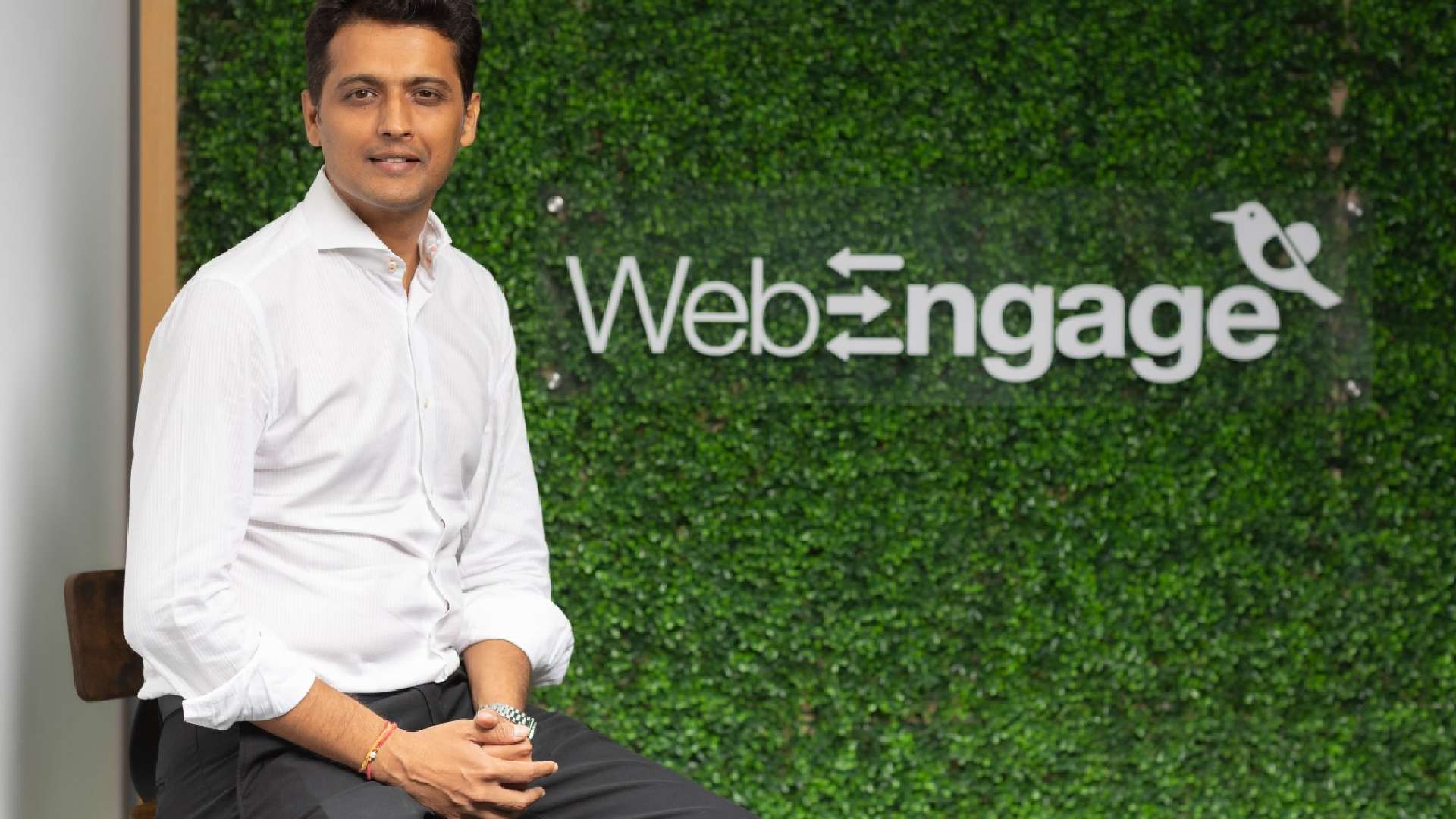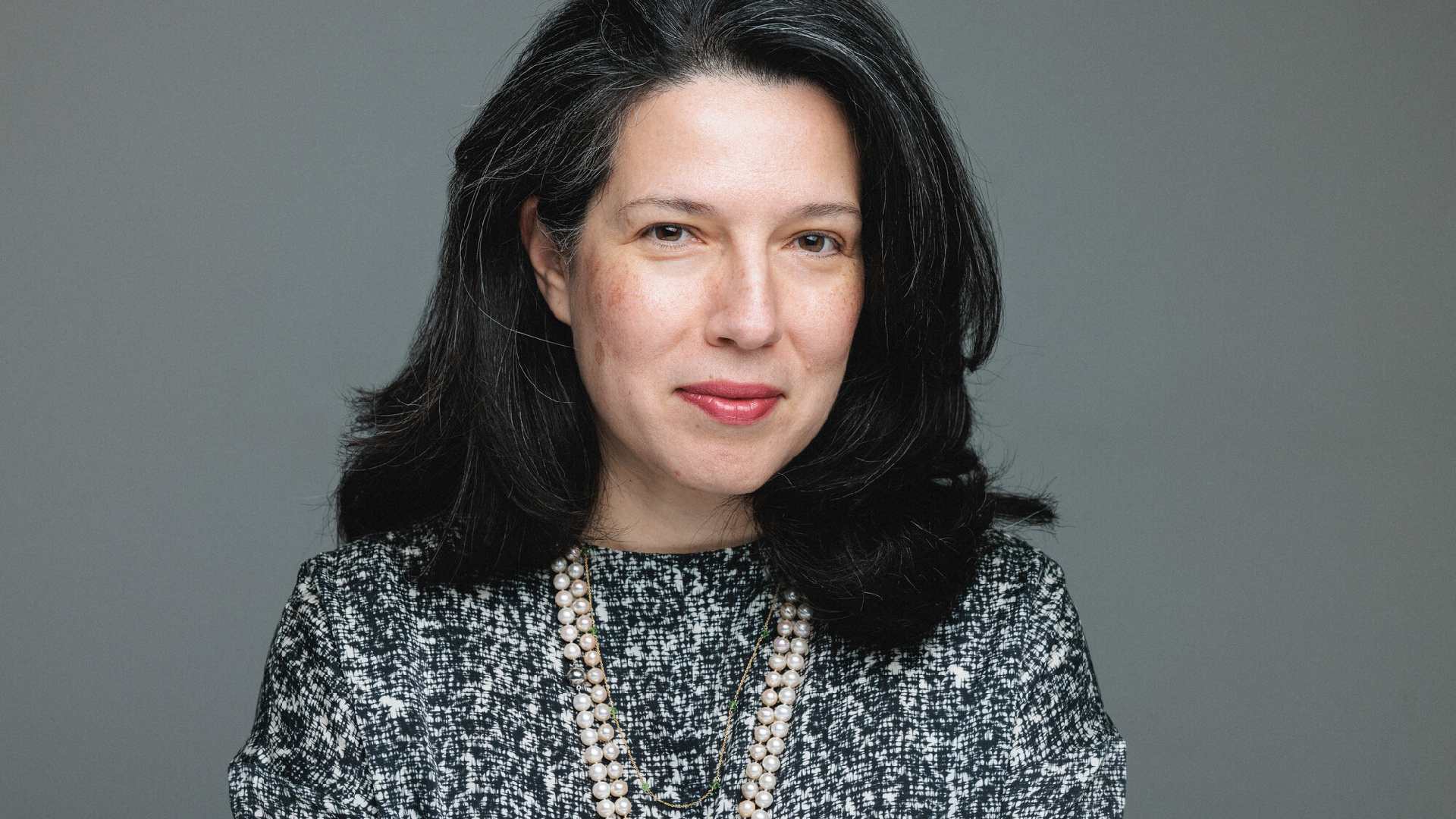Tech Interviews
RedHat Summit Connect 2025: A discussion with Ed Hoppitt and Adrian Pickering

Exclusive Interview with Ed Hoppitt, EMEA Director – Value Strategy, App and Cloud Platforms at Red Hat & Adrian Pickering, Regional General Manager, MENA & Enterprise Segment Lead for CEMEA at Red Hat
Having worked in global telecom and advised some of the world’s largest enterprises, how have these experiences shaped your approach to developing IT solutions?
Ed: I believe that designing and running operational IT over many years gives one a deep understanding of what truly matters to a customer, especially those partnering with Red Hat. This background enables me to connect with our customers on a level where they feel understood regarding their pain points. Today’s biggest challenge for enterprise IT is building systems that are predictable, replicable, and standardized—yet able to scale effectively.
When you look at what Red Hat offers and how we help enterprises build these solutions, our focus is rooted in leveraging the open source community. We invest in projects that we know will create tremendous value for our enterprise customers, taking those projects upstream, incorporating them into the Red Hat portfolio, and industrializing them into platforms such as OpenShift. Customers choose platforms like OpenShift because they represent best-of-breed choices, delivering stability, reliability, predictability, and scalability. With my operational IT background, I appreciate just how crucial these outcomes are for every customer I speak with.
This year’s Red Hat Summit focuses on curiosity and turning acquired knowledge into practical application. It’s about transforming acquired knowledge into practical applications. Through this, what key message are you hoping to leave with the audience this year?
Adrian: I view curiosity as the foundation for working with our customers to truly understand their vision—where they want to be 18, 24, 30, or even 36 months down the line. It’s about gaining a clear grasp of the business challenges they face or the new markets they wish to serve in the future. We then align our best capabilities to support them along that journey, keeping cost efficiency in mind. This might involve modernizing infrastructure, existing applications, or even building new applications that open doors to entirely new customer segments or solutions.
A great example of this is our work with the Dubai Health Authority, who were on stage at Summit Connect Dubai. When we engaged with them, we took the time to deeply understand the challenges they were trying to address for the citizens and then brought not only our technical products but also our expertise in project management, implementation, training, and knowledge transfer. I’m very proud of our achievements over the years, and I believe that in doing so, we add significant value for our customers.
Ed: To add another perspective, the most compelling conversations I have with customers often begin with discussions that don’t initially center on technology. They start with, “I want to imagine a world where things are different—where you can help me achieve something extraordinary.” For instance, with Red Hat OpenShift AI, we collaborated with the US Department of Veterans Affairs to build a platform that effectively reduced self-harm and suicide rates. By harnessing a platform that could analyze how people called in for assistance—assessing tone and how they described their situations—we helped the teams prioritize who needed immediate care versus who could wait a while for some support.
It’s when someone presents you with such a profound challenge that you really see the immense opportunity we have as an organization. These technology platforms do more than enable business; they help vulnerable people receive the care they need and, ultimately, save lives.
You mentioned that for Red Hat it’s relatively easy to work on new technologies because of the robust support provided by partners and customers alike. Can you elaborate on just how important those relationships are for your team?
Adrian: The point is that, while we are proud of the solutions we deliver through Red Hat, many integrated solutions require components from multiple software vendors. Our partners and integrators are essential because they bring together the various components needed to deliver, implement, and support these complex solutions. In many regions, especially where we serve multiple countries, these partners offer additional scale and reach, often accessing markets where Red Hat might not have a direct footprint. This collaboration is a critical part of why we work so closely with our partners.
Ed: Another significant benefit of having partners is that it allows Red Hat to concentrate on what we do best. We aren’t trying to solve every aspect of the IT enterprise supply chain. Instead, we work with best-of-breed partners who focus on their own areas of expertise. This means that Adrian’s teams and others in our region can focus on delivering core value to our customers. As we saw on stage, one of the Middle East’s largest banking group was very ahead of the curve in its approach to virtualisation and modernisation. These partners enable us to help customers execute at scale and with credibility. My background in operational IT tells me that although the journey is rarely smooth, having a trusted team and partners makes all the difference.
In today’s enterprise technology landscape, where hybrid and multi-cloud environments are the norm, how is Red Hat helping customers unlock the potential of open source technologies?
Ed: For me, the hybrid and multi-cloud narrative is essentially about providing customers with standardization. Some customers might say that they’re on a path toward data center consolidation, or are committed to a single hypervisor, or even a multi-cloud strategy. But once they embrace a hybrid approach, the underlying message is that they require a globally consistent management and operational platform—one that spans multiple cloud providers, private data centers, or even edge environments.
How do we achieve this consistency in an open source manner? When you’re a proprietary company, control is tight. With our strategy, we offer customers open choice—where to run their platform and which workloads to deploy on top of it. In essence, our approach empowers customers by eliminating the risks of siloed, locked-in solutions. This freedom enables businesses to continuously ask, “What should I run, and where and how should I run it?” They consider the portfolio of applications, evaluate whether low-latency edge deployment is needed—as is common for a supermarket loyalty system—or whether a core data center or public cloud deployment makes sense. The operational “how” is addressed by determining whether to run on a container platform, a virtual machine platform, or an alternative setup. Finally, the “why” ties back to ensuring the overall solution aligns with the customer’s cost and business objectives.
Ultimately, our focus is on answering one simple question for the customer: “What should I run, and where, how, and why should I run it?” This encapsulates our commitment to providing both choice and clarity in today’s complex IT environment.
Adrian: I find it quite interesting how that perspective plays out regionally. While we enable customers to run applications on our platforms, major players like Google are also part of the ecosystem. Particularly in Europe, where there is current uncertainty, many governments are questioning whether their sovereign data should reside on a cloud service originating from the U.S. Without diving too deeply into politics, this debate is prompting customers to consider alternative cloud options. For example, when running OpenShift on-premises or on a cloud provided by a specific country, it becomes easier to migrate to a new provider if necessary. This is an evolving discussion, especially in Europe, and it’s something that might expand beyond political cycles in the future.
Ed: Exactly. In Europe, the focus remains on providing choice. With open source technology, we sidestep many political concerns because of the transparency it offers. Customers can inspect the code to see that there are no hidden backdoors or data issues. Consequently, building a sovereign solution using Red Hat technology has gained significant traction. Both governments and organizations are increasingly interested in retaining full control over their data.
It seems that customers also desire a degree of freedom with their platforms; they want to ensure that no external party completely controls their systems. How does Red Hat provide this assurance of complete control?
Ed: Customers can deploy our platform in either of two ways. If they run it in their own data center, on-premises. In this case, they obtain full access—they have the code, the platform, all the necessary certificates, and they manage it themselves. In contrast, if they decide to run the platform on one of the hyperscalers, while the underlying compute infrastructure is provided by the hyperscaler, the platform—the layer where the data sits and the applications operate—remains in the open source domain. Therefore, even in these cases, customers retain the ability to influence, control, and understand what happens with their data and applications. And when it comes down to it, every country and organization will make its own decisions, but our consistent message remains: our focus is on choice. Whether a company decides to run its workloads privately, on the public cloud, or at the edge, we ensure that they have the consistent tools and platforms to do so efficiently.
Adrian: That’s exactly right. We have long maintained a commitment to enabling customers to choose the open hybrid cloud. Whether a customer opts for a sovereign cloud, a hyperscaler, or their own private cloud, our core mission is to grant them the freedom to choose and to operate in a simple, consistent, and controlled manner.
Where do you see the enterprise technology landscape heading in the next three to five years?
Ed: I believe that over the next three to five years, we will witness an increasingly consolidated effort to eliminate complexity within IT organizations. Over the last decade, IT has excelled in building silos—if anything, it’s been very effective at doing so. However, with the advent of AI, these separate silos of infrastructure and data are becoming even more problematic. When your data resides in multiple unconnected silos, it becomes extremely challenging to aggregate and leverage it for AI-based insights.
In a recent discussion with a financial services industry leader, the focus was increasingly on ensuring access to all their data, democratizing it internally, and enabling AI-driven querying. This represents a paradigm shift, as data today typically lives within isolated applications. In an AI-integrated world, breaking down these silos is critical. I foresee that one of the most significant developments in the near future—driven by AI—will be the democratization of data access across organizations.
Adrian: I concur. From a regional perspective, we might be a couple of years behind more developed markets like Europe or the U.S. For instance, we are still in the earlier stages of transitioning to the cloud. In the UAE and other regions, sovereign cloud providers are just beginning to expand their offerings. Financial institutions, aviation companies, and others are now starting to embrace the cloud more aggressively than they have in the past four or five years.
Ed: Another nuance here involves what we’re exploring with Granite and small language models. Often, to help Adrian’s customers manage support tickets, you don’t need a language model that knows Shakespeare by heart. Large language models typically contain vast amounts of data, much of which isn’t directly relevant to a given enterprise. Our focus has thus shifted to a choice: do we help organizations harness AI by asking questions of data they couldn’t access before, or do we tailor solutions with smaller language models designed to address specific enterprise challenges?
One notable example was how we applied a tailored small language model within Red Hat to support our own teams in resolving support tickets. This initiative not only saved millions of dollars but also significantly enhanced customer experience and sped up response times. Over time, while large language models have captured much of the buzz, I suspect we will see rapid adoption of small, specialized language models tailored for specific functions.
Tech Interviews
AI-POWERED CUSTOMER ENGAGEMENT, CONTEXTUAL MARKETING & MORE

Exclusive interview with Hetarth Patel, Vice President – Growth Markets (MEA, Americas, APAC), WebEngage
What role is AI playing in customer engagement in the region?
AI brings precision to moments that were previously handled with guesstimates. It identifies which customers are exploring something new, which ones are hesitating, and which ones may never return unless they’re nudged at the right time. That improves the experience without making users feel monitored or overwhelmed.
Across verticals, AI helps determine how frequently someone should be contacted, what format resonates with them, and when they’re most open to taking the next step. When communication follows the customer’s rhythm instead of the brand’s, loyalty strengthens naturally.
We are hearing more and more about contextual marketing. How would you define it in today’s Middle Eastern digital economy?
Contextual marketing in the Middle East is about recognising intent as it forms, not after the fact. Consumers in this region move quickly – comparison, consideration, and decision often happen in a single session. So brands need to respond to micro-signals in real time. When a platform can interpret these cues, the experience becomes smoother: relevant suggestions appear naturally, checkout journeys shorten, and customers feel understood without being overwhelmed. For businesses, this reduces wasted impressions and strengthens the quality of engagement. You convert the right people. The result is tighter spending, better retention, and a more predictable path to revenue.
How are customer engagement platforms evolving in the face of AI copilots and automations?
They’re becoming systems that support both momentum and oversight. Marketers in this region want recommendations, not replacements. The AI copilot element helps interpret data faster and flagging sudden behaviour spikes, suggesting audiences worth testing, or predicting where attention is drifting.
At the same time, automation has matured. Journeys can react to dozens of signals without manual input, and campaigns update themselves based on performance. This dual structure works well in markets like Saudi Arabia, where digital maturity is rising sharply. Teams get strategic clarity from the copilot, while automation handles the heavy lifting in the background.
Which technologies are proving most effective in helping GCC brands improve customer experience, ROI, and business outcomes?
The most effective setups are the ones where data moves freely. A Customer Data Platform(CDP) becomes powerful when it ingests live activity, loyalty signals, support tickets, and payment behaviour without friction. CRMs enrich that view with relationship history. Data lakes contribute long-term patterns that sharpen predictions.
What GCC brands are solving today is fragmentation. Teams get a single view of the user and can respond with confidence by connecting these systems cleanly. It also gives them the ability to test smaller ideas quickly instead of betting on broad, expensive campaigns. Better alignment across these tools results in higher ROI because every action is anchored in accurate context.
Across Saudi Arabia and the UAE, what improvements have you seen when brands move to AI-powered customer engagement and automation?
The most noticeable improvement is consistency. Brands no longer depend on campaign calendars to stay relevant, the system keeps the conversation going based on what users actually do. AI also cuts out the “one-size-fits-all” messages that used to frustrate customers across email, push, and in-app channels.
In sectors like airlines, grocery delivery, and financial services, we’ve seen repeat engagement rise simply because journeys adjust themselves. For example, a traveller exploring upgrade options receives timely details about availability rather than a generic newsletter. These small shifts accumulate and create clearer funnels, and a more efficient use of marketing time.
Could you share an example?
A recent example is NICE in Saudi Arabia, a brand with a large offline footprint that wanted deeper digital loyalty. Once their web and app activity were stitched together, the team could finally see how customers moved between browsing, carting, and store visits. That led to rethinking their journeys around intent instead of promotions.
As soon as they shifted to behaviour-led engagement – reactivating dormant shoppers, personalising recommendations, and automating recovery journeys – repeat visits rose sharply and engagement grew 148%. The improvement came from recognising micro-signals and responding early.
What is WebEngage’s long-term vision for the Middle East as brands shift from acquisition-heavy models to retention-driven growth?
Our long-term vision is to make retention operationally simple and strategically central. GCC businesses view retention as the engine that stabilises revenue. We’re building toward a future where engagement, loyalty, data governance, and service workflows sit within one connected layer.
This will allow brands to identify intent across channels, respond instantly, and measure outcomes with much greater accuracy. The goal is to help enterprises move from “sending messages” to designing relationships that last a lifetime.
How have you adapted in the face of these advancements?
Our competitive edge comes from how we operate, not what we claim. Scale, market rankings, and platform breadth matter, but they’re outcomes and not differentiators. What truly moves the needle for our customers in the Middle East is the way we build with flexible data architecture, a composable CDP that adapts to their systems rather than forcing a migration, and activation tools that work reliably at enterprise scale.
We’ve grown by treating engagement as an engineering problem rather than a marketing challenge. That mindset is what helps us scale. The idea is to make sure our fundamentals are strong enough to create the next set of milestones.
With regulations like PDPL and sector-specific frameworks in place, how essential is consent management for brands operating in the Middle East?
Consent management has become a structural requirement, especially as more industries digitise service delivery. It’s no longer about obtaining a checkbox, it’s about ensuring that user preferences flow across every system the brand uses – marketing, support, loyalty, and analytics.
In regulated categories, inconsistent consent handling can invalidate entire engagement programs. We address this by integrating with specialised consent tools so preferences update instantly across channels. Customers notice when brands respect these boundaries, and that strengthens long-term relationships.
What differentiates WebEngage in this region, and where do you see opportunities?
What sets us apart is our ability to adapt deeply to each organisation’s structure, whether it’s a fast-scaling marketplace or a highly regulated enterprise. The platform integrates into complex ecosystems without forcing data to move in unnatural ways.
Where we continue to evolve is governance, onboarding speed, and advanced modelling. The need for more precise controls and predictive capabilities increases as sectors like telecom, aviation, and financial services expand their digital footprints . We’re building tools that help teams act faster while meeting regulatory expectations with confidence.
What advancements can we expect from WebEngage in the next 12 months?
We’re now building on top of the foundations that already work well for our customers. The next phase is about reducing the effort needed to go from insight to action. After launching Insights CoPilot, we’re extending the ecosystem with Segmentation and Campaign CoPilot, and Governance CoPilot will follow. Each one is designed to shorten the path from understanding behaviour to acting on it with confidence.
In parallel, we’re deepening our machine-learning models so the system can recognise subtle behavioural shifts and adjust journeys with more nuance. The aim is to let the platform handle the operational complexity quietly in the background, while marketers focus on strategy, creativity, and the larger customer experience.
Tech Interviews
Beyond Detection: Turnitin’s Vision for AI Transparency

Exclusive interview with Amal Dimashki, Regional Director, MENAT, Turnitin.

- What new teaching approaches are educators adopting today? Could you also share some of the strategies institutions are using to build AI literacy within their teaching community?
Education is experiencing a major transformation as artificial intelligence becomes more integrated learning experience. Educators are moving beyond traditional teaching methods and adopting dynamic, student-centered approaches. Blended learning, flipped classrooms, and project-based instruction are quickly becoming ‘the norm’, all supported by digital tools that personalize learning and foster deeper engagement.
A key shift is the rise of formative assessment practices. Continuous, adaptive feedback is changing how instructors support their students. AI platforms now provide real-time insights into individual progress, helping educators offer more tailored guidance. This not only improves learning outcomes but also encourages students to take better ownership of their educational journeys.
Moreover, Institutions are placing strong emphasis on building AI literacy. Professional development initiatives now cover technical skills, ethical considerations, prompt design, and the pedagogical shifts needed to use AI responsibly. Cross-functional committees ensure that policies, practices, and institutional values remain aligned.
AI literacy is being woven into curricula, so that both faculty and students hone the critical skills needed to engage purposefully with emerging technologies. Institutions are also working to promote equity by supporting underrepresented groups and ensuring broad access to essential AI tools.
Strategic partnerships with industry help keep education relevant to workforce needs. The most forward-thinking institutions see AI literacy as an ongoing commitment and foster a culture of continuous learning.
- Has generative AI accelerated the shift away from traditional educational values? Do you believe reading and writing habits among students are being compromised more than in previous generations?
Generative AI has certainly advanced the pace of change, yet this transformation reflects evolution rather than erosion. The core values of education: critical thinking, creativity, integrity, and the pursuit of knowledge, remain steadfast. What is shifting is the way learners engage with these values.
Concerns about these changes are valid. The convenience of AI-generated content can tempt students to bypass the cognitive ‘creative’ effort essential for meaningful learning. Early research suggests that excessive reliance on AI may constrain creativity and weaken essential intellectual processes. Writing is not putting one word in front of another; it is the process of exploring thoughts, coping with the shades of meaning, and generating original ideas. Sidestepping this crucial process can hinder a student’s intellectual development.
The relationship between humanity and technology has been an eternal dance, since every generation has faced challenges brought by new inventions. The difference today is the speed and scale of change. Students must now learn to read, write, and critically evaluate AI-generated material while recognizing bias and practicing ethical usage.
AI should not be seen as a threat to traditional educational values but as a tool that can redefine and reinforce said values. The responsibility falls on educators to ensure that AI serves as a complement to authentic thinking, not a substitute for it. To achieve that, they should provide clear instruction and guidance, set expectations, and develop a robust foundation in both digital and human literacy.
- What new forms of academic misconduct have emerged with digital tools—such as contract cheating, essay mills, and AI-driven paraphrasing?
The digital era has introduced new dimensions of academic mischief (that being misconduct). While the underlying behaviors are nothing new, the tools that facilitate them have become advanced and easily accessible.
Contract cheating platforms now let students outsource assignments with the click of a button. Essay mills, powered by generative AI, now draft customized essays that even the most vigilant detectors, and educators cannot detect. Meanwhile, advanced paraphrasing tools can rewrite existing content , sidestepping traditional plagiarism detectors with ease.
Collaboration, too, has taken on a new twist. With instant messaging and AI helpers, students can share answers in a matter of seconds or generate responses that they cleverly tweak to mask their true origins.
Tackling these challenges calls for more than detection tools. It requires a comprehensive strategy that combines technology with clear institutional policies, engaging education, and a campus culture rooted in integrity. The goal isn’t just to detect misconduct, but to make it less tempting by inspiring students to choose the ethical path to delivering original thoughts.
- Should educators have access to AI detection tools to identify cheating in the classroom? Given that Gen-Z is often more technologically savvy than their teachers, how can educators stay ahead?
Educators should have access to AI detection tools, while keeping in mind that such tools are but helpful guides- not mere flawless judges. The true value of these resources lies in the transparency and context they offer, helping to start a constructive conversation between educator and student.
At Turnitin, tools such as Turnitin Clarity allow educators to review the entire writing process from start to finish, including: early drafts and potential AI involvement instances. Such features help instructors set clearer expectations, offer more targeted feedback, and grade more fairly.
The availability of detection tools also serves as a deterrent, introducing a sense of uncertainty for students who might consider using AI improperly. However, detection alone is not enough. Educators should invite their students to have open discussions highlighting the importance of learning integrity, responsible AI use, and the value of an authentic learning experience.
As for keeping pace with tech-savvy students, educators need ongoing professional development, clear institutional policies, and supportive learning communities. Inviting students to these discussions can foster a sense of shared responsibility.
The ultimate goal is not to catch students but to guide them toward ethical, skill-building use of technology.
- What does the future of writing look like with the rise of AI tools like ChatGPT and Claude? Which types of assessments are naturally more resistant to AI-assisted cheating—such as practical projects, oral evaluations, or in-class writing?
The future of writing will be a partnership between human creativity and AI assistance. While AI can support idea generation, drafting, and editing, the essence of meaningful writing will always rest on originality, critical thinking, and the unique voice of the individual.
As AI becomes increasingly integrated into writing processes, assessment methods must adapt. The following types of assessments are more resilient to AI-assisted misconduct:
- In-class writing assignments with restricted access to external tools and resources.
- Oral assessments, including presentations and debates that test real-time thinking.
- Hands-on projects that measure skills beyond AI’s reach.
- Assessments focused on drafts and revisions to track progress over time.
- Reflective tasks that require students to explain their thought process and decision-making.
These approaches prioritizes learning and process rather than the final product. They foster deeper learning by valuing originality, engagement, and genuine understanding.
- And finally, what’s the story behind Turnitin, and where do you see the platform heading next?
Turnitin began with a clear mission: to uphold academic learning in a rapidly changing educational landscape. Over time, it has grown from a plagiarism detection service into a comprehensive learning and integrity platform used and trusted by more than 16,000 institutions in more than 185 countries..
Our goal is to provide educators with the tools they need to promote authentic learning. This includes detecting misconduct, but it also advances transparency, fairness, and continuous improvement.
Looking ahead, Turnitin is enhancing its AI detection capabilities, developing inclusive data models and tools that reveal the entire learning process. We are committed to minimizing bias and supporting a diverse range of learners while ensuring our solutions remain accurate and equitable.
We are also strengthening partnerships across education, industry, and policy to support AI literacy and responsible use. As technology evolves, our focus stays the same: to bridge traditional academic values with new technologies, and to empower educators and students to move forward with integrity and purpose.
Tech Interviews
WHY RESPONSIBLE AI IS NOW A LEADERSHIP IMPERATIVE

Exclusive interview with Helen Kerkentzes, Associate Dean, Executive Education and Managing Director of the LBS Riyadh Executive Education Office
How is executive education evolving to help leaders navigate rapid technological change, especially in the Middle East?
We are constantly updating the content and types of programmes London Business School (LBS) offers, to reflect rapid technological and broader, changes.
We help leaders navigate rapid change through our world-class faculty and their cutting-edge research which is shaping business and the wider world. LBS’ Data & AI Initiative – the destination of excellence for transformative insights on how data science and AI reshape firms, markets and society – equips business leaders, policymakers, regulators and educators with the knowledge and frameworks to adopt and integrate AI responsibly, strategically and sustainably. We translate this research into programmes such as our AI Master Class and Next Generation Digital Strategy, as well as embedding it into our custom programmes.
From your experience leading AI-focused programs, what core skills should today’s executives prioritize to stay competitive?
Through LBS’ AI-focused sessions and our faculty experts, we teach a grounded understanding of AI, the ability to redesign how organisations work, and a renewed emphasis on the human qualities technology cannot replace.
Leaders need a clear understanding of the technology and the ability to see beyond the buzzwords. It is then that they realise that real value doesn’t come from the technology alone, but from rethinking how work gets done, redesigning processes and workflows, in some cases, quite radically.
The more AI advances, the more our faculty also emphasise the importance of judgement, emotional intelligence, empathy, and ethics. These are the areas where machines still struggle and where leaders truly differentiate themselves.
Are there specific challenges unique to the Middle East that slow the adoption of modern leadership practices?
The pace and acceleration of change today challenges leaders the world over. The Kingdom of Saudi Arabia is embracing this with remarkable appetite.
The Kingdom has three distinct advantages when it comes to driving transformation. First, two thirds of the population in Saudi Arabia are younger than 30 years old. While these young leaders need to be equipped with the right skills, this is an enormous opportunity.
Second, the significant number of women now entering the workforce represent a unique and significant human capital potential for the Kingdom’s transformation and contribution to the economy.
Finally, the size and scale of the Kingdom’s bold and future-ready vision is itself a strength – the appetite to move at pace, meet challenges and invest for the future.
What role should universities and executive education providers play in addressing gaps in critical thinking, digital literacy, and strategic leadership?
At LBS our aim is to be a trusted partner to our clients and their people across the public and private sectors in the Kingdom of Saudi Arabia, developing leadership capability, strengthening talent pipelines, and supporting long-term institutional goals.
We work closely with employers and government institutions to deeply understand their context and goals. We co-create tailored solutions that draw on LBS’s global expertise, customized to fit their unique contexts and challenges, whether through open enrolment programmes, customized learning journeys, degrees, or online courses. We also capture the transformation in the Kingdom in case studies that we use to teach our global community of leaders.
How is LBS’s Riyadh office contributing to talent development and supporting the region’s shift toward a knowledge-based economy?
Situated in the heart of Riyadh’s historic Diriyah city, the office reinforces LBS’s long-standing partnership of more than a decade with the Kingdom and the country’s growing focus on human capital development.
It allows us to support the people realising the Kingdom’s transformation and next phase of sustainable and knowledge-driven growth, on the ground, where we can be closer and more connected to our clients. Our aspiration is that together we can deliver long-term sustainable success, rooted in the Kingdom’s context and remarkable ambitions.
-

 Tech News1 year ago
Tech News1 year agoDenodo Bolsters Executive Team by Hiring Christophe Culine as its Chief Revenue Officer
-

 VAR8 months ago
VAR8 months agoMicrosoft Launches New Surface Copilot+ PCs for Business
-

 Tech Interviews2 years ago
Tech Interviews2 years agoNavigating the Cybersecurity Landscape in Hybrid Work Environments
-

 Tech News5 months ago
Tech News5 months agoNothing Launches flagship Nothing Phone (3) and Headphone (1) in theme with the Iconic Museum of the Future in Dubai
-

 Tech News2 years ago
Tech News2 years agoBrighton College Abu Dhabi and Brighton College Al Ain Donate 954 IT Devices in Support of ‘Donate Your Own Device’ Campaign
-

 VAR1 year ago
VAR1 year agoSamsung Galaxy Z Fold6 vs Google Pixel 9 Pro Fold: Clash Of The Folding Phenoms
-

 Editorial1 year ago
Editorial1 year agoCelebrating UAE National Day: A Legacy of Leadership and Technological Innovation
-

 Cover Story10 months ago
Cover Story10 months agoUnifonic Leading the Future of AI-Driven Customer Engagement

























